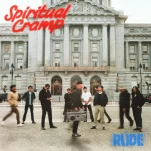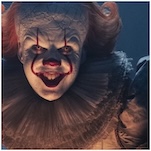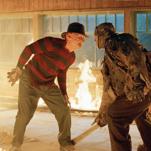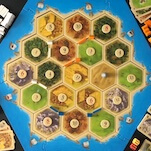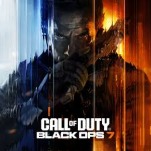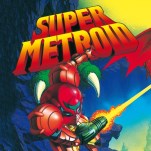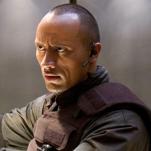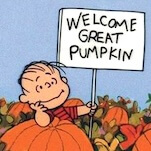Every A Nightmare on Elm Street Movie, Ranked
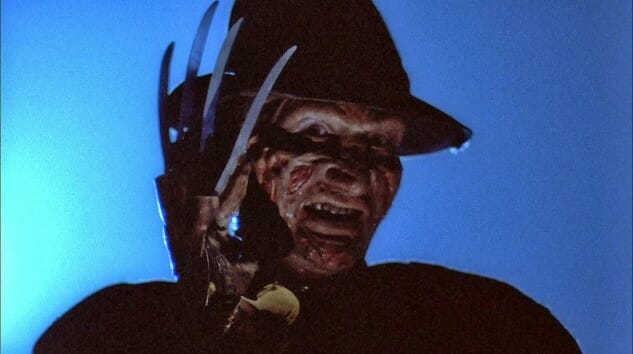
Depending on who you ask, 1984’s A Nightmare on Elm Street is acknowledged as one of the greatest slasher movies of all time … or as the greatest slasher of all time. We certainly don’t disagree with that assessment—the original installment ranks as our #2 slasher on the list of the 50 best slasher films in history. The only movie that beats it is Halloween, and I mean, come on … it’s Halloween. It’s basically untouchable.
And yet, there’s a part of us that still leans toward Nightmare. Of the “big three” slasher franchises, it’s A Nightmare on Elm Street that could boast the most “complete” and imaginative of original installments—a benefit of having come along after Halloween and Friday the 13th, building upon the examples and tropes they established.
And then, there’s the man himself: Freddy Krueger, the straw that stirs the drink. The scion of an era when slasher villains were typically shadowy figures, à la Michael Myers or the masked giallo villains of the ’60s and ’70s, or unstoppable brutes like Jason Voorhees, Freddy was an entirely new kind of killer, one who took sadistic delight in playing with his victims and manipulating their minds. A streak of black humor in the original Nightmare eventually blossomed into a full-on obsession with splatter comedy and one-liners, creating a character that inspired endless imitation among lesser films. But none of them could match A Nightmare on Elm Street in terms of visual resplendence and evocative settings.
Ultimately, that’s the real hook of Nightmare as a series—its anchor to the world of dreams. In a dream, anything can happen, and as a result, anything can happen in one of these films. The simple conceit that Freddy Krueger is a magical killer who can stalk and murder you in your dreams was one that opened up endless creative options to a new generation of horror directors, writers and effects artists. So thanks, Mr. Wes Craven. You changed the game, and not for the last time in your career, either.
It’s now been 14 years since the last Nightmare entry, its much-derided 2010 reboot with Jackie Earle Haley as Freddy Krueger, and it’s been more than 20 years since original actor Robert Englund last donned the bladed glove for a feature film in 2003’s Freddy vs. Jason, though he did once reappear in an episode of The Goldbergs. In the meantime, we pay tribute to the legacy of A Nightmare on Elm Street by ranking the entire series to date.
Here is every A Nightmare on Elm Street movie ranked:
9. Freddy’s Dead: The Final Nightmare, a.k.a. A Nightmare on Elm Street 6 (1991)Director: Rachel Talalay

As the ’80s came to a close, the slasher genre as whole was running out of steam—or it might be more accurate to describe the sensation as smashing into a brick wall, in terms of how abruptly many of the films released went from “fun” to “exhausting.” Final Nightmare is a textbook example of everything that went wrong with slashers during this period, as well as being a cautionary tale of what a franchise looks like when it overextends itself to the point of exhaustion, in a way not too different from the mess that is Friday the 13th Part VIII: Jason Takes Manhattan. It simply feels paper thin—a cynical, depleted cash grab full of random celebrity cameos that had completely lost track of the spirit of the series, forcing Wes Craven to return for New Nightmare in 1994, just to salvage Freddy’s economic viability. There’s even some completely gratuitous 3D sequences, à la Friday the 13th Part 3D.
Continuing to intensify the goofier aesthetic seen to a lesser extent in A Nightmare on Elm Street 5: The Dream Child, Final Nightmare more or less abandons any serious attempt at being scary in favor of kooky, sophomoric humor. Freddy is never less threatening than he appears here, a feeling that is only compounded by the threadbare script’s decision to retcon the villain’s history once again to now include a wife and child. In fact, narrative impetus barely exists in this film at all—the characters simply wander from set piece to set piece in lackadaisical fashion, while almost most of the film’s elements seem cribbed from superior entries in the series. The group of troubled shelter kids recall the hospital bunch of Dream Warriors, but without any of their likability or characterization, while the plan to bring Freddy into the “real world” and kill him there is essentially exactly the same as in the 1984 original. In fact, the only thing worse than Final Nightmare’s stolen ideas are its original ones—like the thought that the entire town of Springwood, Ohio, could be turned into a ghost town of dead children and insane parents without anyone outside even noticing.
If not for the restorative powers of New Nightmare, this would likely have been the last time we ever saw Freddy Krueger, and it would have been a piteous going away party.
8. A Nightmare on Elm Street (2010)Director: Samuel Bayer

This was just a practically unwinnable assignment from the get-go—although props to Platinum Dunes and New Line for taking a chance on a first-time director in the form of Samuel Bayer, and casting a solid actor in the form of Jackie Earle Haley. There were reasons to be cautiously optimistic, going into the Nightmare reboot … but ultimately, the atmosphere just wasn’t there. Nightmare movies are supposed to be fun, but this one is dour and lifeless.
Obviously, the absence of Robert Englund is a massive blow. You can replace infinite numbers of Michael Myers portrayers, and you can change the man behind the mask when it’s Jason Voorhees, but no slasher villain is so defined by an actor’s portrayal as Freddy is with Englund, for better or worse. Jackie Earle Haley tries to play it straight, echoing back to the more frightening, sadistic Freddy of the original Nightmare, but even that Freddy had a sick sense of humor, whereas Haley’s version lacks personality and vivaciousness in comparison—and that’s not even getting into this film’s unsettling choice to make Freddy’s previously implied pedophilia more overt and canonical. Likewise, Rooney Mara isn’t up to the task of stepping into Heather Langenkamp’s shoes, and has a tendency to look ashamed of herself for appearing in a slasher remake rather than embracing the scream queen mantle.
Perhaps a more visually dynamic director might have been able to give the Nightmare reboot some life, but the final results are coldly impersonal. With that said, I’d rather watch this again than the peak absurdity of Final Nightmare.
7. A Nightmare on Elm Street 5: The Dream Child (1989)Director: Stephen Hopkins

There were plenty of horror fans deriding the Nightmare on Elm Street series for jumping the shark after The Dream Child, but compared with Final Nightmare there’s much more that can be salvaged here. This is a Nightmare entry of peaks and troughs, high points and low. It brings back Alice, the final girl of the previous installment, once again portrayed by Lisa Wilcox, but her character feels like a shell of her assertive former self, which is a shame after a solid outing in The Dream Master. Instead, the story literally turns inward, as the plot revolves around Freddy’s attempt to feed souls into and thereby possess the spirit of Alice’s unborn child. This likewise leads to a loosening of the established “dream rules” that is somewhat kayfabe-breaking, making the implication that Freddy can, for instance, attack people during the daytime when the unborn baby is asleep.
On the other hand, The Dream Child can boast some of the series’ grossest individual deaths, with the most famous highlight being the force-feeding death of Greta, who distends in unrealistic (but weirdly disturbing) makeup that recalls Eraserhead in particular. These bits save the film from the bottom of the barrel, but any headway it occasionally manages to make with well-shot nightmare sequences is undone by the intense focus on Freddy’s backstory and mother, an overwrought mythology that manages to even undermine Amanda Krueger’s previous involvement in A Nightmare on Elm Street 3: Dream Warriors. Ultimately, Dream Child is one of the most unfocused entries in the series—occasionally pretty to look at, but bereft of effective characters and confused as hell in its internal logic. It’s ambitiously loony.
-

-

-

-

-

-

-

-

-

-

-

-

-

-

-

-

-

-

-

-

-

-

-

-

-

-

-

-

-

-

-

-

-

-

-

-

-

-

-

-








